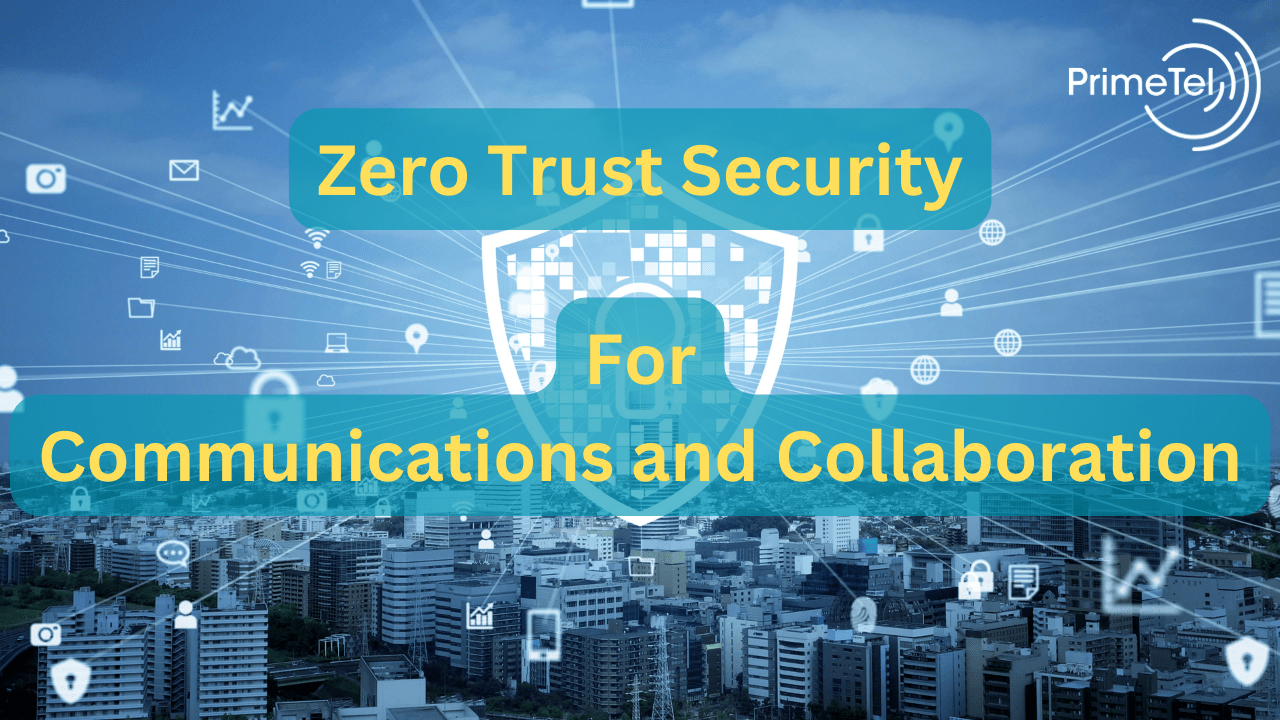INTL: + 44 (0)203 890 4974
Email: info@primetelltd.co.uk

Zero Trust security networks and architectures have grown increasingly attractive to business leaders in recent years. At present, the “Zero Trust Security” market is growing at a CAGR of 15.2%, and some experts predict it will be worth $99.17 billion by 2030.
Part of the reason companies are leveraging zero-trust environments at speed, is the rise of new security mandates and regulations around the world. The 2021 Executive Order issued by President Biden in the USA during 2021 outlined a requirement for “zero trust” security to be built into any software the federal government or its contractors may need to use.
However, zero trust solutions also offer a host of benefits many business leaders are keen to access. Zero trust technologies provide businesses with greater visibility across the enterprise, thanks to their focus on consistently monitoring each network connection. They also allow for simplified IT management, better end-user experiences, and greater flexibility in a cloud-focused world.
One of the areas where companies are beginning to implement zero trust technology more rapidly, is in the communication and collaboration space. Here’s how companies can embed zero trust solutions into their UC and collaboration solutions.
Bringing Zero Trust to the Unified Communications Space
One of the reasons why zero trust innovations are becoming so crucial in the modern world, is that companies are rapidly migrating their technologies and systems into distributed ecosystems across the cloud. As a result, traditional security models which automatically attribute “trust” to any employee located within a network, and block those outside of a specific landscape are less effective.
As companies make the transition into the world of Unified Communications as a Service, or “UCaaS”, implementing a zero trust architecture can be an easier way to ensure business employees access the solutions they need, without opening the door to data breach issues.
The challenge for brands is in figuring out how to begin building their zero-trust architecture. While the strategy for each business may vary, some of the most common steps will involve:
1. Developing new Security Policies
The first step in transforming the security landscape, is understanding your current threat network. Companies need to be able to determine in advance which employees should have access to which tools and resources. They also need to be able to define which security measures should be in place to help identify the team members leveraging network tools.
A complete audit of the security and technology infrastructure is necessary to ensure companies understand what kind of vulnerabilities they need to address. This will mean examining everything from software and hardware vulnerabilities in the UCaaS space, to specific threats associated with things like remote and hybrid work policies.
2. Leveraging New Access Controls
Once businesses have identified their threat vectors, and determined which employees should have access to which pieces of data, they need to be able to implement the right permissions structures into their UCaaS environment. This means establishing specific “access” levels for each team member, based on their role and position within the business.
Working with the right UCaaS vendor can be extremely helpful here. Companies like Microsoft have already begun implementing new access control options into the “Teams” network, to give businesses more control over roles and permissions. Plus, there are built-in tools for onboarding and offboarding different staff members, so companies can ensure rights are revoked at the correct times.
3. Implementing new Identity Technologies
Since identity is one of the most essential components of zero trust security, companies need to be willing to invest in the latest identity controls. There are various ways to create an “on-ramp” into zero trust security with identity technologies. Companies can leverage password security managers with single sign-on solutions and multifactor authentication.
There are also tools for the UCaaS landscape which can leverage device certification capabilities, which extends trust to devices based on their configuration. Alternatively, brands can explore the benefits of zero-trust network access (ZTNA), which integrates with identity access management and multi-factor authentication to control access to applications based on user identity.
4. Exploring Device Management
The devices used to access communication and collaboration tools are another critical point of focus for those interested in zero trust security. Most zero trust strategies implement some form of mobile device management technology, which allows companies to control which managed devices can access corporate communication resources. These tools can also assist with limiting access to specific apps, or restricting teams from using tools they’re not approved to access.
With mobile device management solutions, companies can also quickly address unusual behaviors and breaches, and wipe information from devices which might be exposed to criminal activity. Laptops and desktops can be quickly disconnected from networks, and employees can be issued new solutions based on their specific communication needs.
5. Exploring Innovative Technology
Finally, leveraging the full benefits of zero trust security requires companies investing in communication and collaboration solutions to be willing to evolve and innovate rapidly. As the security space evolves, the innovative solutions available to support companies are transforming at an incredible rate. Today’s businesses can leverage AI solutions to pinpoint potential breaches instantly, or examine biometrics as a user credential.
Automation systems can be implemented to automatically deliver, or revoke network access based on specific triggers and policies. Brands can even work with communication providers to segment their network and adjust the way information is delivered across the landscape.
Implementing Zero Trust Technology into UC
While implementing a fully integrated zero trust architecture into the UC landscape may seem daunting at first, it can be a powerful way for businesses in the modern world to protect their assets and data. Fortunately for today’s leaders, there are already UCaaS innovators and collaboration tool vendors investing in the zero trust space, who can help you get started on your journey.

